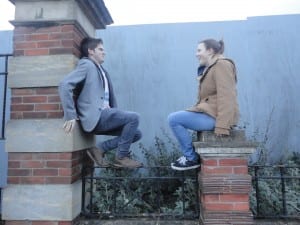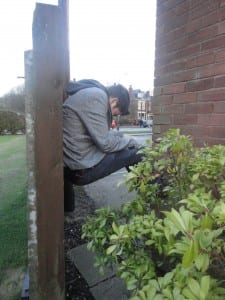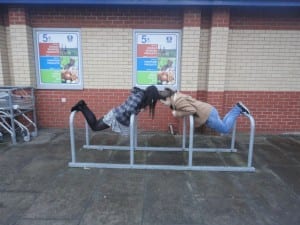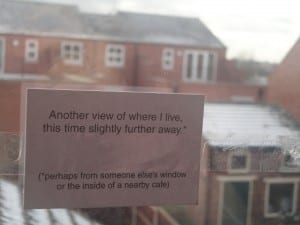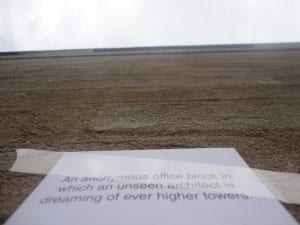Kastner and Wallis’s typology of land art (1998) suggests involvement: “the artist in a one-to-one relationship with the land, using his or her body in forms of ritual practise” (Pearson 2010, p. 33).
During our last session we drifted in small groups, and we took this opportunity to become a part of the architecture physically. We tried to play around and find shapes and spaces that our bodies could reproduce or fit into. As Willi Dorner stated that to“see the space you also have to feel the space. Feel closer to the city. Closer to where you come from” (2005). From this we were able to become a part of the landscape around us, be physically in touch with the architecture that has been built over the years. Then we carried out a free writing task, in which we wrote down any thoughts or feelings that were going through our minds at the time of being a part of the spaces we chose. It led us to ask each other questions about how we felt, such as: what colour did you feel you were? What animal are you? If we chose the colour black and an animal such as a mole, it would suggest that in this space the person would feel rather trapped, scared perhaps and buried in this space. However if blue and a bird was chosen it would suggest that being in the space would have made the person feel exposed, cold and able to get free if wanted to. There is a very big difference between them. This task helped us to understand and become closer to the space around us.
The other task we were presented with was to take the two cards you were given and place them around the city according to what is said on the cards, and document it.
The first one said I was to place it in ‘another view of where I live, this time slightly further away’, so I chose to place it from another room in my house. It was one of my housemate’s windows who has a slightly different view that I have from my own window. I chose to place is there in the hopes that when he comes home he will see the card and look out hopefully examining the view more thoroughly than before.
The second card said to place it on ‘an anonymous office block in which an unseen architect is dreaming of even higher towers’, so after a long journey around the city of Lincoln I found an office block, nothing out of the ordinary, just a plain simple building. It is situated next to Lincoln’s City Hall. Perhaps a person who passes by will read the card, look up and study the building, and wonder the many possibilities that this building may become in the following years.
Work Cited
Pearson, Mike (2010) Site Specific Performance, Palgrave Macmillan.
